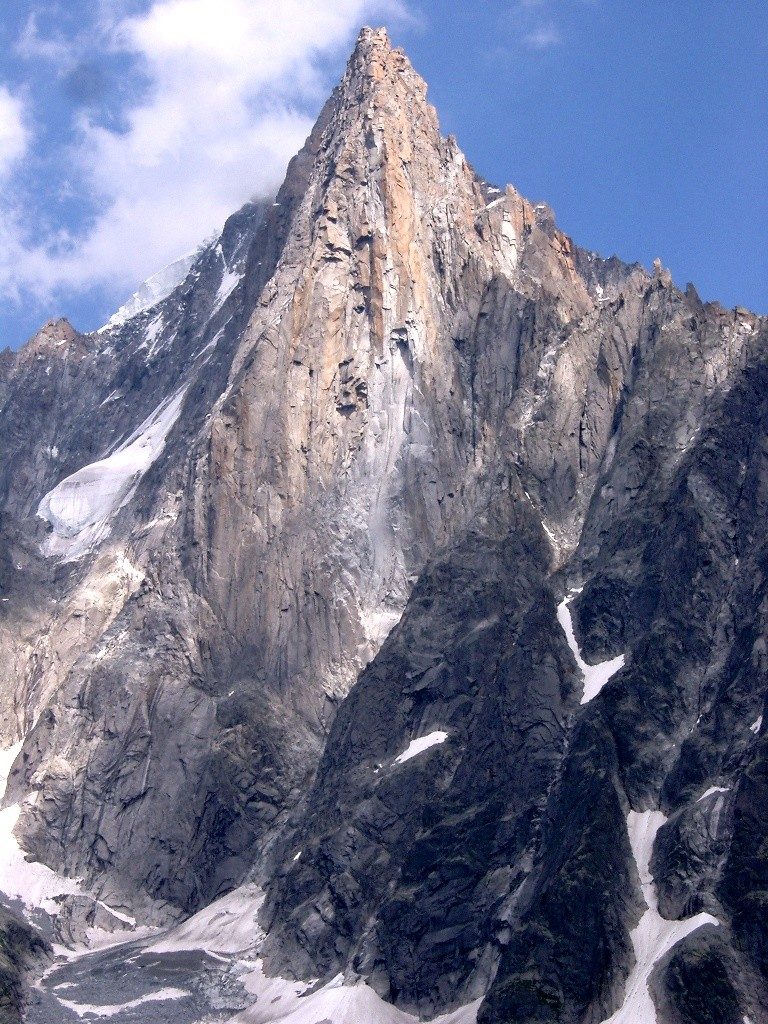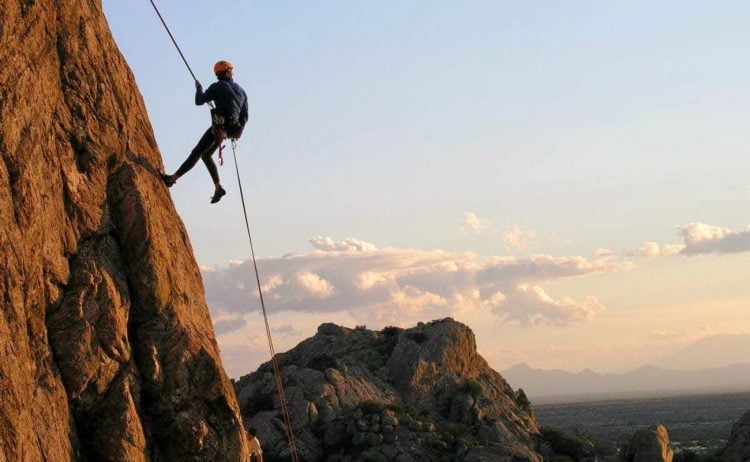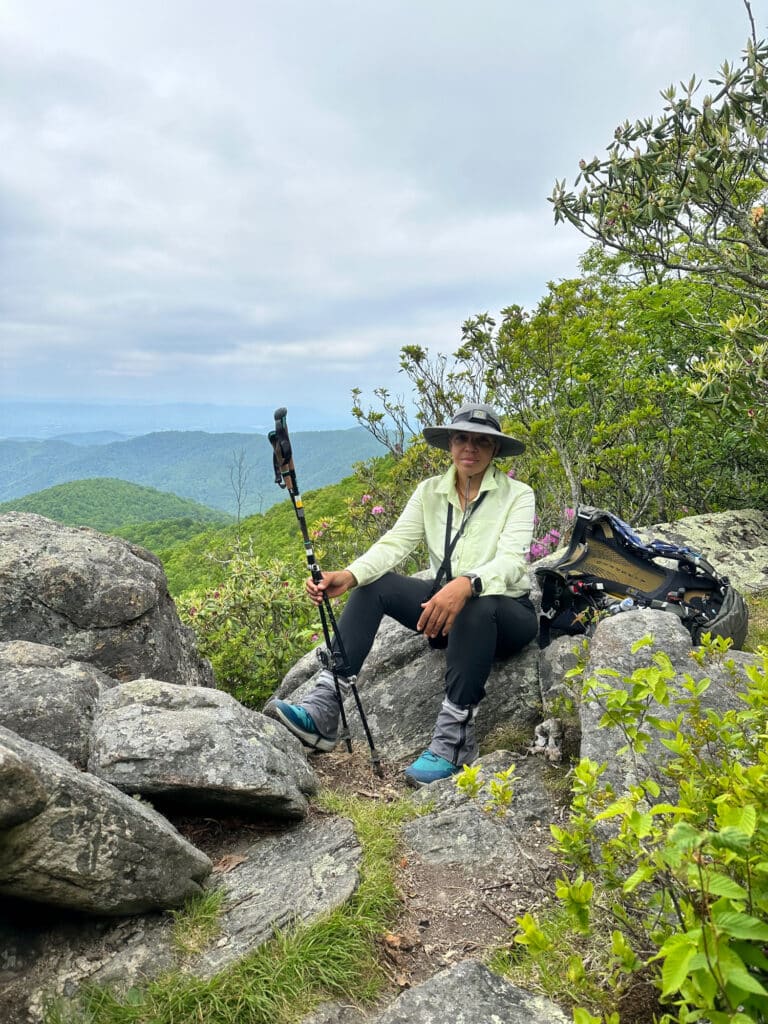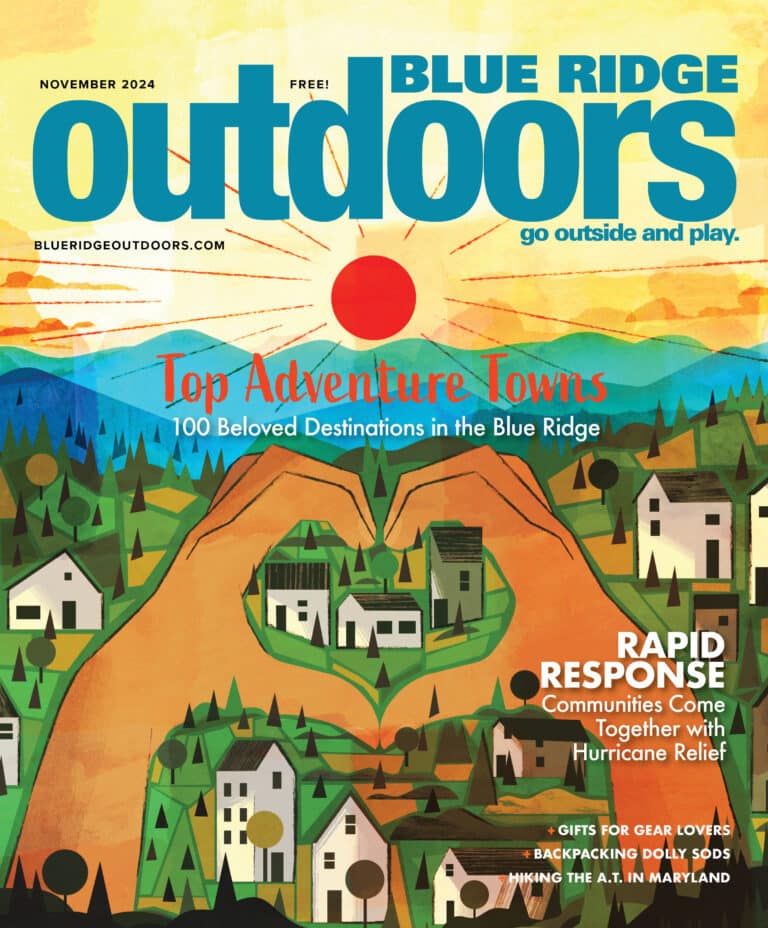Why limit your outdoor experiences to the familiar hiking trails and hanging in a hammock? The stunts you see outdoor pros pull off on TV are within your reach once you make the decision to attack a new experience.
For those who want some on the edge fun, nothing quite compares to the experience of making your way down a tall cliff or rock face while depending on the rope, carabiners, and your own inner strength. Rappelling is a rite of passage within the climbing community and is a great way to return to the base of a mountain after a climb or hiking experience that involves a descent elevation gain and can be enjoyed by people of all skill sets.

Photo by camptocamp.org
The creation of the adrenaline filled experience is credited to Jean Estéril Charlet, a French climber based in Chamonix. Rappelling or abseiling (as it is know in the rest of the world), was first practiced while Charles made his descent from the Petit Dru, a sharp peak in the French Alps in 1876. By the turn of the century, rappelling gained in popularity throughout the climbing world. Climbers from all over the world tried taking the idea and developing it even further. Successfully doing so, Otto Herzog, a German climber and inventor first introduced the use of carabiners to the sport in 1911.
Since that time, rappelling has transformed the outdoor recreation world with many different variations of knots, harnesses, and techniques tailored for different types of terrain. Three main types of rappelling practiced today are the standard rappel where a person’s back faces the ground with face up while descending a ledge. A free rappel is a technique often practiced by covers where a person’s body is suspended in open space while they slide down the rope to solid ground. Lastly and certainly not least is the Australian rappel that puts a climber to the ultimate test of facing downward while making their descent.
Rapelling is now used as a military training technique, a means to rescue people, and amongst many other purposes it is also a recreational pursuit for thrill seekers and those wanting to branch out a bit, putting their fears and limits to the test.
Defying your brain’s normalized laws of gravity, rappelling successfully and with much control can involve putting your body at a 90 degree angle and walking down a massive steep rock backwards. Scary as it may seem, many who have tried it can only seen to boast on how exhilarating the adventure is from start to finish. Like many outdoor pursuits, rappelling can happen just about anywhere from the side of a building to a mountaintop. A specific location that is popular in many guided rappelling and climbing adventures is waterfalls both as their waters are rushing in the warmer months and while frozen in the winter.
For an immersive adventure on the edge without the costs of buying your own gear, you can give it a try on a guided trip on your next vacation or right near your home within the Blue Ridge Mountains. Many guided trips will assist you in your journey by providing gear, transportation, instruction, guides and sometimes even meals for a pretty fair price. An excursion of climbing and rappelling beginning at 9:30 a.m. and ending at 4 p.m. for an individual who is a beginner and over the age of 10 near Grandfather Mountain in North Carolina goes for $129. When factoring in the thrills with the views you would have combined with the comfort of knowing you are with practiced professionals that will keep you entirely safe, that’s not too bad!
The saying goes, “If it scares you, do it.” So maybe this summer is the summer of chasing after a new adventure like rappelling. If there’s one guarantee in going after an experience like it, it’s that you won’t go home unchanged. For some tips and techniques to get started off in the world of rappelling, check out this article from Climbing Magazine and view the video below produced by REI.








